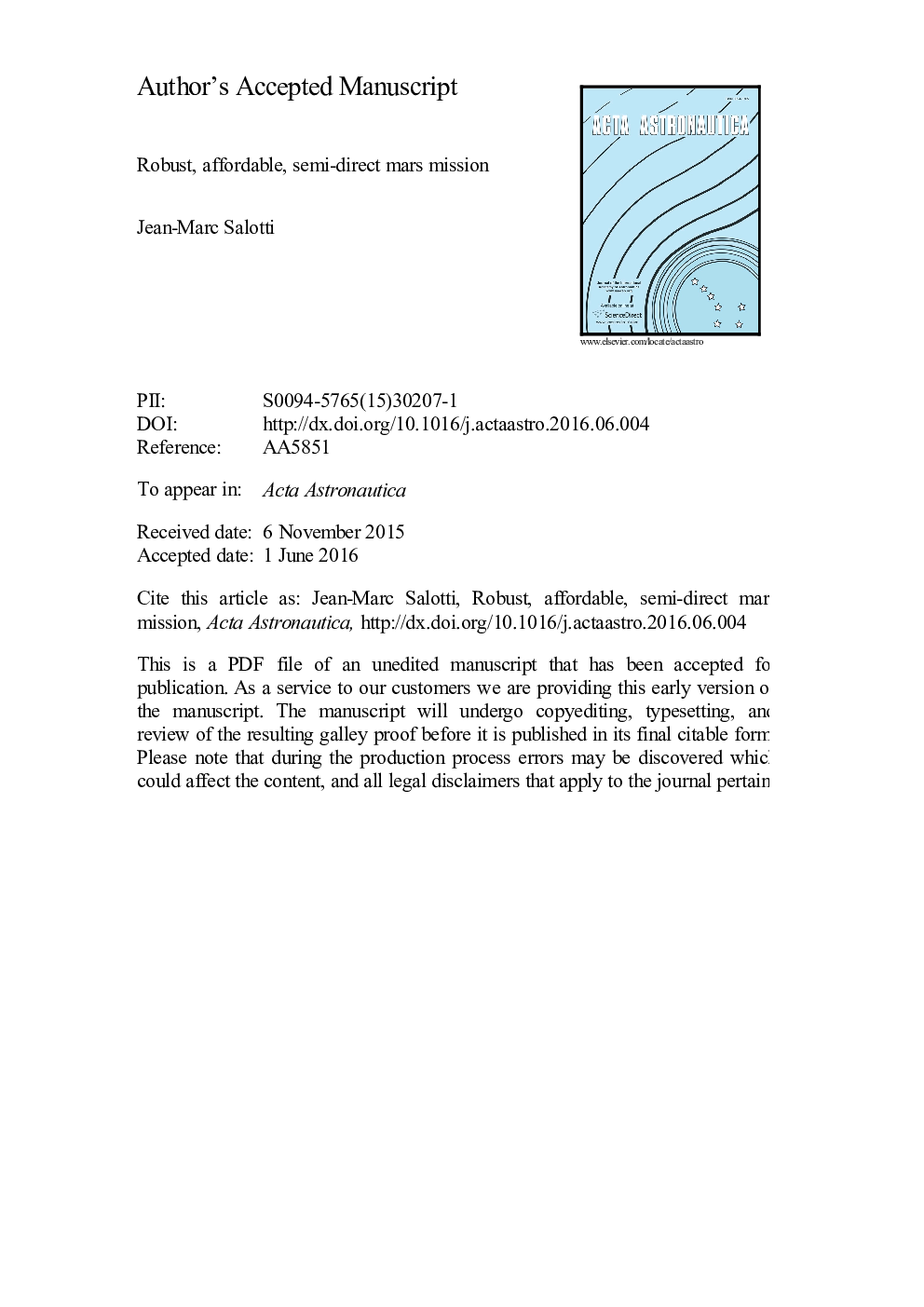| Article ID | Journal | Published Year | Pages | File Type |
|---|---|---|---|---|
| 8056014 | Acta Astronautica | 2016 | 29 Pages |
Abstract
A new architecture is proposed for the first manned Mars mission, based on current NASA developments (SLS and Orion), chemical propulsion for interplanetary transit, aerocapture for all vehicles, a split strategy, and a long stay on the surface. Two important choices make this architecture affordable and appropriate for the first mission. The first is splitting the Earth return vehicle into two parts that are launched separately and dock in Mars orbit. This is necessary to make aerocapture feasible and efficient, which considerably reduces mass. The second is reducing the crew to 3 astronauts. This simplifies the mission and reduces the SLS payload mass under the 45-metric ton limit for a direct TMI (trans-Mars injection) burn without LEO assembly. Only 4 SLS launches are required. The first takes the Mars ascent vehicle and in situ resource utilization systems to the planet's surface. The second takes the first part of the Earth return vehicle, the habitat, into Mars orbit. Two years later, two further SLS launches take a dual-use habitat (outbound trip and surface), Orion, and an enhanced service module to LEO, and then into Mars orbit, followed by the landing of the habitat on the surface. Transit time is demonstrated to be easily reduced to less than 6 months, with relatively low impact on propellant mass and none at all on the architecture.
Keywords
Related Topics
Physical Sciences and Engineering
Engineering
Aerospace Engineering
Authors
Jean-Marc Salotti,
